

When it comes to the hobby, certain sets hold a special place in the hearts of collectors. Usually, this is due to several reasons, including historical significance, nostalgia, or investment potential. The 1989 Upper Deck set checks all items on the list. It has immense nostalgic value, synonymous with innovation in trading cards, and its cards are highly valued.
The 1989 Upper Deck set marked the company’s foray into the trading card market. It introduced a fresh approach to the industry, ignited a wave of excitement among collectors, and forever changed the landscape of sports card collecting.
This article will discuss everything about the 1989 Upper Deck set; it will cover the history, features, and legacy of the 1989 Upper Deck set. It will also discuss several notable cards and key rookie cards, including one of the most iconic trading cards in the world – the 1989 Upper Deck Ken Griffey Jr rookie card.
Shop for 1989 Upper Deck baseball boxes on eBay
Using traditional production and design methods, Topps completely dominated the trading card market until the late 1980s. However, this domination was shaken when Upper Deck entered the scene in 1989.
Founded by a group of sports enthusiasts, Upper Deck promised to bring a fresh perspective to trading cards. They guaranteed premium trading cards, groundbreaking features, glossy fronts, additional color photos, and generally a new level of quality.
Indeed, the inaugural Upper Deck set stood out from other trading cards of the time with its glossy fronts and heavy-duty cardboard. Upper Deck raised the stakes of trading card quality. While its retail price of 99 cents was unheard of back in the day, few could argue with the quality of the cards.
Upper Deck invested state of the art printing technology to produce cards with sharp images and vibrant colors. The company also introduced tamper-proof holograms on each card to help combat the spread of counterfeit cards. Collectors could easily verify the legitimacy of their collections.
Prior to the 1989 Upper Deck set and even after that, many sets have claimed to be game changers. However, the 1989 Upper Deck baseball actually changed the entire trading card game. It ushered in an era of high-quality baseball cards as other card producers hurried to catch up.
Shop for 1989 Upper Deck baseball boxes on eBay
This 800-card set was printed on slick paper stock, with vibrant color images on the front. The player’s name and team logo were noted at the bottom corner. It featured thick white borders with its right side mimicking the first baseline.
The reverse side also had lots going for it. They were printed in full color with a hologram designed to guard against counterfeit cards.

Additionally, Upper Deck delivered a wealth of information on the players highlighted. Each 1989 Upper Deck card included detailed statistics and biographical information. Fans could know everything about the life and career of their favorite players. This additional information added an extra layer that ensured the cards were more than just papers with pictures.
The 1989 Upper Deck Baseball set consists of 800 cards released in two separate series – low numbers (#s 1-700) and high numbers (701-800). High-series packs contained a mixture of both low- and high-series cards.
Both series were issued in 15-card, 36-pack boxes with a suggested retail price of $0.99/pack – although this went as high as $4 shortly after its release.
Each High-Series pack contained two cards from the 100-card High Series (cards 701-800) and the rest from the Low Series (1-700). Upper Deck issues two factory sets – one with just the 100 High-Number Series cards and one with all 800 cards.
Low series packs sell for much more than the High Series as Low Series packs offer a higher chance of pulling a Griffey card.

The 1989 Upper Deck set is anchored by a generous crop of Star Rookie cards, with the rookie cards of Ken Griffey Jr., Sandy Alomar Jr., John Smoltz, Randy Johnson, and Jim Abbott leading the pack.

In 1989, Topps still had the exclusive license to sell baseball cards with sticks of gum. Upper Deck couldn’t just sell baseball cards by themselves.
Companies like Fleer, Donruss, and Score introduced Team Logo Stickers, Puzzle Pieces, and Trivia Cards as a walk-around. Upper Deck went with a 2″ diameter holographic logo sticker. All 26 MLB teams were represented, and each set included ten stickers.
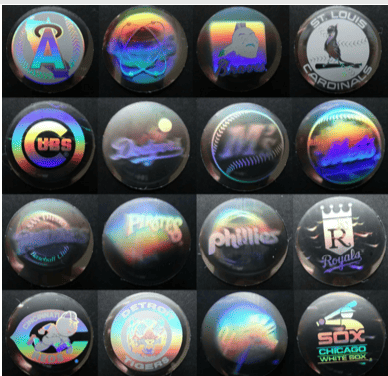
Upper Deck hit the jackpot with their rookies in their 1989 card set. With over four Hall of Famers on the list, it’s an exciting set for baseball collectors. Here are the notable rookies that anchored the 1989 Upper Deck set.
Like Donruss’s “Rated Rookies” and Topps’s “Future Stars,” Upper Deck introduced its rookie subset. They hit the jackpot, as they couldn’t pick anyone better to lead their lineup. The Ken Griffey card is undoubtedly the most iconic in the 1989 Upper Deck set.
It’s also the first Upper Deck card produced. It set the tone for what was to come, showcasing the immense talent and potential of a young Ken Griffey Jr. The career “The Kid” had has all but ensured that there is no such thing as a “bad” Ken Griffey rookie card. However, the Upper Deck card stands above all his rookie cards.
The classic photograph shows a smiling Griffey in his Mariners uniform with a bat resting on his shoulder. Upper Deck’s decision to use Ken Griffey as their number 1 card was risky as he hadn’t played a game in the league yet. However, Griffey took over, and the rest is history. He went on to win 10 Gold Gloves in consecutive seasons – from 1990 through 1999.
This card’s importance to the hobby cannot be understated. It is one of Griffey’s most sought-after rookie cards and holds its value very well. Ungraded cards sell for $50 – $75, while a PSA 10 would carry a price tag of over $2,000. Sales of above $3,000 up to $7,000 (signed) are common.
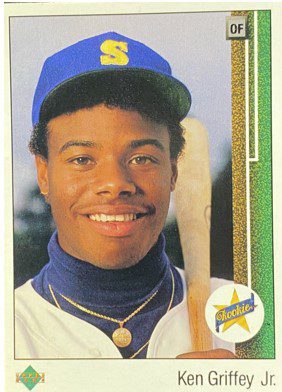
As a player, Gary Sheffield was highly talented and influential. He made his mark on the game with his powerful swing and consistent offensive prowess. While a bad reputation tended to take attention away from his exploits on the field, few could argue with his ability.
He batted .300 or better in ten seasons, had eight seasons with 100 or more RBI, and hit 20 or more home runs 14 times. His PED scandal has kept him out of the Hall of Fame and limited the value of his cards. However, this card still holds some value, with its price ranging from $2 to $98, depending on the grade.
There’s also an error version of this card (Gary Sheffield #13 SS Upside Down) worth considerably more. It ranges from $6 to $995, depending on its condition.
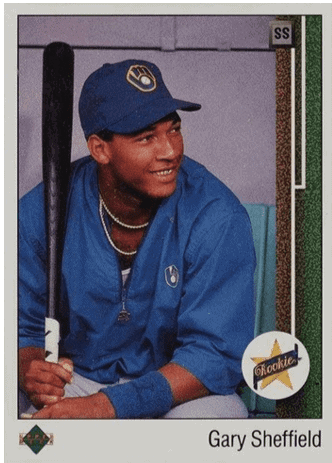

Randy Johnson – the Big Unit – was among the game’s most intimidating and dominant pitchers. He won over 300 games in his illustrious career, the second-most career strikeouts of any pitcher ever, and was one of the best pitchers to start their career in the 1980s.
The 1989 Upper Deck Randy Johnson card is arguably the most desirable rookie card after the Ken Griffey Jr. card. It’s also one of Randy Johnson’s most coveted rookie cards. Its value ranges from $6 to $400, depending on its grade.
Another Hall of Famer rookie card in this set, John Smoltz, had a sputtering start to his Hall of Fame career. Smoltz ended his career as an eight-time All-Star with a 213-155 record, 154 saves, 3,084 strikeouts, and a 3.33 ERA.
He’s also the only player in big league history with at least 200 career wins and 150 saves. As such, his cards hold their value quite well, and the 1989 Upper Deck rookie card is no different. Its value range from $5 to over $100 depending on its condition.
| Card | Total PSA Pop | PSA 10 Pop | Average PSA 10 Price | Recent Sale Price |
| 1989 Upper Deck #1 Ken Griffey Jr. | 97,909 | 4,084 | $1,956.50 | PSA 8 = $76 |
| 1989 Upper Deck #13 Gary Sheffield | 9,149 | 2,719 | $37.20 | PSA 10 = $34 |
| 1989 Upper Deck #25 Randy Johnson | 33,782 | 5,078 | $99.46 | PSA 10 = $100.80 |
| 1989 Upper Deck #17 John Smoltz | 6,187 | 2,452 | $44.92 | PSA 10 = $51 |
Other notable rookies in this offering are Craig Biggio, Tom Gordon, Steve Finley, Jim Abbott, and Omar Vizquel.
Aside from its outstanding collection of rookie cards, the appeal of the 1989 Upper Deck set is further enhanced by other cards that hold a special place in collectors’ hearts. These cards showcase notable players, and legendary figures, further contributing to the set’s legacy.
Dale Murphy, an exceptional outfielder, left an indelible mark on baseball during his career. Murphy began his major league career in 1976 with the Atlanta Braves and quickly rose to be regarded as one of the most dominant players of his era. A two-time National League MVP, Seven-time All-Star, and one of the best players of the 1980s, collectors can always find some value in Murphy’s cards.
Collectors especially covet his 1989 Upper Deck card. Depending on the card’s condition, its value ranges from $8 to $100. There’s a reverse negative error version of this card, one of the era’s most coveted error cards. It shows Murphy holding the bat over his left shoulder rather than his right. The average selling price of a PSA 10 grade is $629.
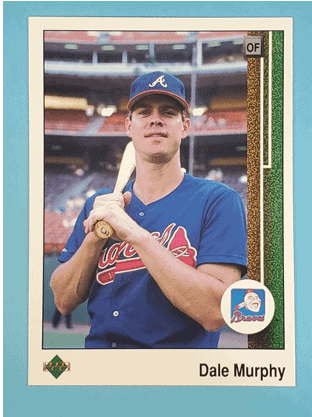
Donald Arthur Mattingly, “Donnie Baseball,” spent his entire 14-year MLB playing career with the New York Yankees. He was named to the American League (AL) All-Star team six times and won nine Gold Glove Awards. The value of his 1989 Upper Deck card ranges from $3 to $60, depending on its condition. The average price of a PSA 10 is $60.99.
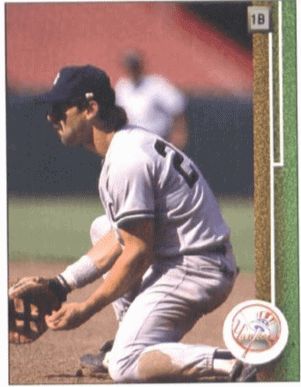
A young Mark McGwire was one of the biggest sluggers in the league by 1989. He won the 1987 American League Rookie of the Year, setting the record for most home runs by a rookie. While his link with PED has placed a dark cloud over his career achievements, few can deny his remarkable performances.
The value of this card ranges from $1 to $40, depending on its condition. According to PSA, the average price of a PSA 10 grade is $36.
Bo Jackson was one of the biggest names of his era—the two-sport icon who transcended baseball and was one of the most famous athletes.
Jackson was immense, from baseball to football to television advertisements and video games. His cards remain popular with collectors and fans to this day. His 1989 Upper Deck card has an average PSA 10 value of $52.
Nolan Ryan ranks top of the game’s most feared pitchers. The Ryan Express is baseball’s all-time leader in strikeouts and walks. He is among the most celebrated pitchers, and his trading cards are popular among collectors.
The photo used has also been lauded as it exemplifies Upper Deck’s unconventional approach to photography. This card holds its value exceptionally well and fetches anything from $4 to $90, depending on its condition. The average price of a PSA 10 is $80.
Unfortunately, the 1989 Upper Deck set, known for its high-quality printing and innovative features, faced issues with creasing on some of the cards. However, like everything about this set, we have a detailed explanation of the cause of the problem. Thanks to Dave Sliepka of Beckett, who interviewed Upper Deck’s Tom Geideman.
Upper Deck’s quest to use the very best of papers significantly contributed to the creasing. They were sourced from Europe and underwent significant temperature changes during transportation to Southern California, where the printing took place.
“…We wanted to paper to be the whitest it could possibly be. The only way to get that was in Europe. So the paper we used was actually imported. So the paper went through many temperature changes to get to southern California. And when we first started printing, we didn’t know anything about moisture and humidity control. I don’t think our original printer had air conditioning. As the paper would expand and contract, sometimes wrinkles and flaws would develop. Another thing I witnessed was the way the printed sheets were handled. The pressmen would grab stacks of sheets, maybe 50-100 at a time and throw them on the press, and then stack them onto pallets. The way they grabbed the sheets was usually by putting a thumb right on the Griffey. So I’m sure that had an effect. Most of those guys had never printed cards before. They didn’t think of it as having any value. Much different than the way things are handled today.
According to Dave
Like most 1980s sets, this set was massively overproduced. Upper Deck initially planned to produce 1,000,000 cards for each player. However, that was increased significantly later due to the massive popularity of the set. Hence, there’s a ceiling to the monetary value of all cards in the 1989 Upper Deck set.
However, the actual value of this set is in its impact on the trading card industry. The 1989 Upper Deck set was Upper Deck’s inaugural set. While it wasn’t the first time a new company entered the market, Upper Deck’s inaugural set changed the hobby forever with its high-quality production. It featured cards released on premium paper stock with high-end printing technology.
Printing on such high-quality paper stock also allowed the company to improve color photography. Vivid colors were showcased, and it introduced colored pictures on the reverse side, which was unheard of until then.
Decades later, cards from the 1989 Upper Deck set still hold their value remarkably well. This is especially true for its rookie cards, including the iconic Ken Griffey Jr. The set also features great cards of notable players like Dale Murphy and Don Mattingly.
The set has cards for every collector and is an excellent addition to any baseball collection. Lastly, the 1989 Upper Deck also has several notable error cards for error collectors.
Is GameStop buying PSA? (the truth!)
I ripped an entire case of Phoenix Football (BIG win or MASSIVE loss?)
Make an extra 30% PROFIT on eBay with this sports card hack
What's your biggest trading card regret? This is a safe space. 🤣
I used ChatGPT to invest in sports cards (and make this thumbnail lol)
Easy hack for buying Tyrese Haliburton rookies at a DISCOUNT.
Did PSA Just Change Everything For Card Collectors?
Top Manchester United trading cards

BCW Thick Card Toploaders 197 Pt. 10 per pack
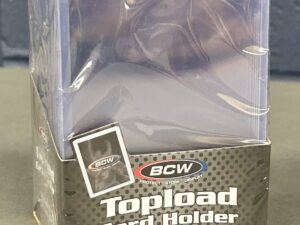
BCW Thick Card 59 Pt. Toploaders. 25 per pack

BCW 20 Pt. Toploaders. 25 per pack
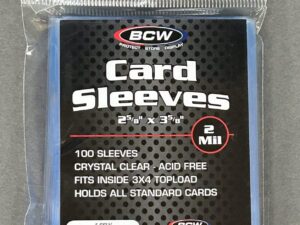
BCW Standard Card Sleeves. 100 per pack
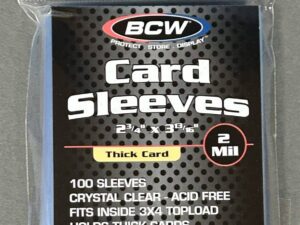
BCW Thick Card Sleeves. 100 per pack

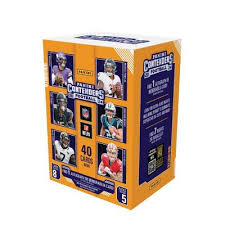
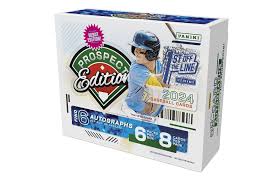
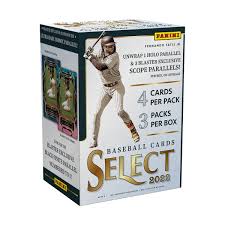
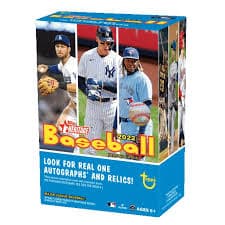
2022 Topps Heritage Baseball Blaster Box Configuration: 7 Packs per Box – 9 Cards per Box. Plus 1 extra pack.
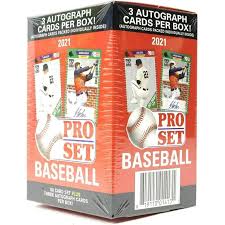
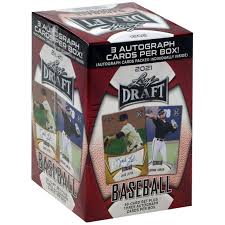
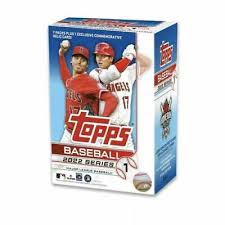
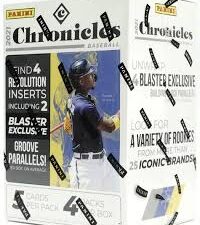
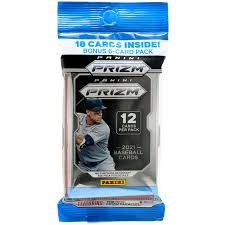
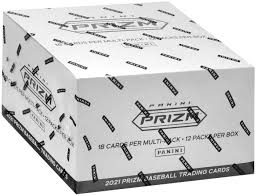

© Copyright 2025 - All rights reserved Cardlines.com / Media Techs LLC - Sports Card News, Reviews, Releases and BREAKS - #thehobby.
Important: When you click on links to various merchants on this site and make a purchase, this can result in this site earning a commission. Affiliate programs and affiliations include, but are not limited to, the eBay Partner Network.
I compared sports card prices from the big sellers to save YOU money
Cardlines 5 hours ago